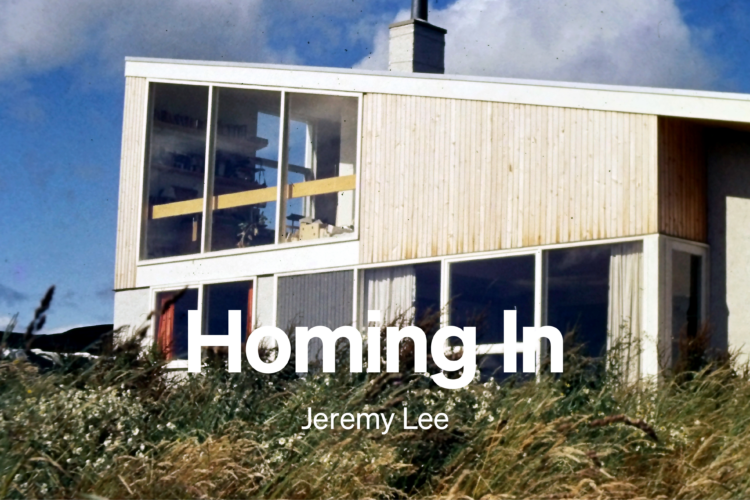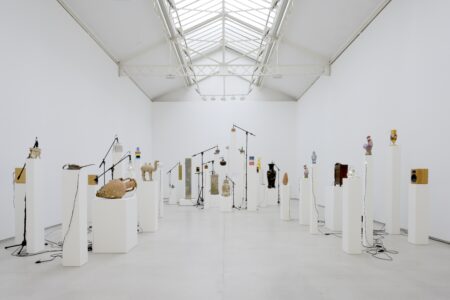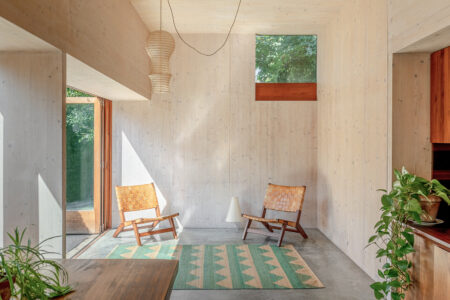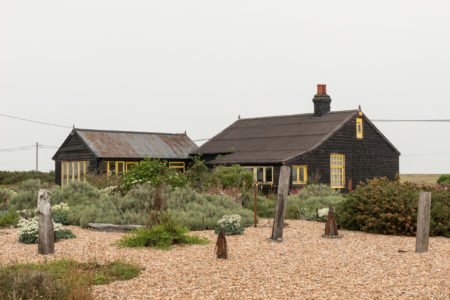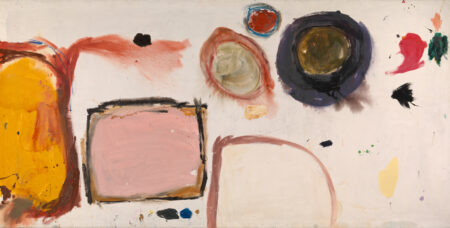Cover Stories: five new architecture, art and design books for your shelf

Inspiration may come in many forms but it’s flighty and hard to find. That said, one place you can be quite sure to pin it down it is on a bookshelf. And while those at TMH HQ are already groaning, we can’t resist the allure of a new title, five of which we’ve rounded up here for your perusing pleasure.
‘Turn of the Century: Portraits of Creative Interiors’, by Henry Bourne, Robin Muir, Pilar Viladas and Jane Withers
Anyone who has spent more than a mere minute on the Journal will know we’ve a bit of thing for peering through the keyhole into the homes of other people – especially when those people live extraordinary creative lives. Imagine our delight, then, when Turn of the Century landed on our desk. Photographer Henry Bourne’s images of the private spaces of the great and the good – from Paula Rego’s pleasingly shambolic studio to Zaha Hadid’s apartment by way of John Pawson’s own minimalist marvel of a home – are the pinnacle, as psychologically interesting as they are aesthetically. Not only do these spaces offer us a how-to on creating spaces of the utmost style, they tell us something of the people inside them too. Exquisitely still and quietly composed, they are rooms as portraits: intimate and insightful in equal measure. To get such a glimpse of those we admire is a rare treat indeed.
Pictured: Robin and Lucienne Day’s living room
‘As Found: Experiments in Preservation’, edited by Sofie De Caigny, Hülya Ertas and Bie Plevoets, published by Flanders Architecture Institute
This is one for the alpha archi-geeks. The accompanying catalogue to an exhibition held at De Singel arts centre in Antwerp, Belgium, As Found looks at ways to approach existing structures in our built environment and the social benefits of working with what we have architecturally. Looking at experimental national and international examples of heritage intervention, the book puts forward the idea that cities – in this case, those of incredibly densely populated Flanders, where space is running out – are sites of enormous potential, as yet untapped. Radical yet sensible and filled with plans, drawings and models as well as photographs, the book offers a fascinating look at building methodologies for the future.
Pictured: Mortsel town hall by Eagles of Architecture © Filip Dujardin
‘Interwar: British Architecture 1919-1939’, by Gavin Stamp, published by Profile Books
When Gavin Stamp died in 2017, the loss was felt deeply in the architecture world. Known for his persistence and passion (which could veer into the polemical) when it came to campaigning, the architectural critic was an outspoken defender of buildings, saving many from demolition and bolstering the movement for the listing of postwar architecture. No structure was too small of stature for Stamp: he also fought staunchly for the protection of the country’s telephone boxes. His writings – most notably for Private Eye – thundered admirably against threats to the country’s built heritage.
How thrilling, then, to have some more. Written shortly before his death, Interwar looks to redress the imbalance Stamp saw in our architectural history – namely, that there was more to the interbellum period than modernism. Taking in everything from the Egyptian revival to the ubiquitous Tudorbethan, this handsome title makes the case for a more dynamic and diverse view of the past.
Pictured: Yaffle Hill, Poole, Dorset, by Edward Maufe, 1930. Photography: John East, 2024 (top); 66 Frognal, Hampstead, London, by Connell, Ward & Lucas, 1938. Photography: John East, 2024 (above)
‘Home Art Soul’, by Sophie Ashby, published by Rizzoli
With such a wealth of projects under her belt – always fun and dynamic, often remarkable for their tactility and emphasis on art – it was only a matter of time before interior designer Sophie Ashby (of Studio Ashby) produced a book. And what a book Home Art Soul is. Its title alone conveys much of Sophie’s sensibilities, while the rooms laid out across its 250-odd pages do an excellent job of taking us on trip through her mind as a designer. As she puts it, this is a “sense of home as a place of identity, belonging and memories,” expressed in punchy colour, contemporary silhouettes, elegant textures and interesting one-offs in projects of all shapes and sizes, from a bijou Belgravia apartment to a collector’s highly curated Californian digs. Aspirational and inspirational, it’s as much a book for the wannabe designer as for the decorator in dire need of direction.
Pictured: Sophie’s family home, by Studio Ashby. Photography: Philip Durrant
‘Now You See Me: An Introduction to 100 Years of Black Design’, by Charlene Prempeh, published by Prestel
“You’ve seen their work – but have you seen them?” This is the question Charlene Prempeh asks us in her punchy and pertinent new book. The answer, we’re forced to admit is: by and large, no – until now. But thanks in part to Prempeh’s explorations, Black creatives – hitherto widely and systematically side-lined or written out of history – are being given the veneration they deserve. Drawing from the worlds of fashion, architecture and graphic design – from film poster artist and Spike Lee collaborator Art Sims to trailblazing modiste Zelda Wynn Jones – it’s a richly illustrated exploration of the profound effect Black creatives have on culture and people across the 20th and 21st centuries. While Prempeh admits it’s not a comprehensive survey (how could it be?), it’s a blazing start, full of optimism for a fairer future.
Pictured: Ann Lowe fitting a dress. J. Paul Getty Trust and the Smithsonian National Museum of African American History and Culture
